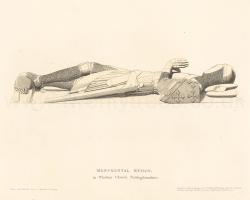Text this colour links to Pages. Text this colour links to Family Trees. Place the mouse over images to see a larger image. Click on paintings to see the painter's Biography Page. Mouse over links for a preview. Move the mouse off the painting or link to close the popup.
All About History Books
The Chronicle of Walter of Guisborough, a canon regular of the Augustinian Guisborough Priory, Yorkshire, formerly known as The Chronicle of Walter of Hemingburgh, describes the period from 1066 to 1346. Before 1274 the Chronicle is based on other works. Thereafter, the Chronicle is original, and a remarkable source for the events of the time. This book provides a translation of the Chronicle from that date. The Latin source for our translation is the 1849 work edited by Hans Claude Hamilton. Hamilton, in his preface, says: "In the present work we behold perhaps one of the finest samples of our early chronicles, both as regards the value of the events recorded, and the correctness with which they are detailed; Nor will the pleasing style of composition be lightly passed over by those capable of seeing reflected from it the tokens of a vigorous and cultivated mind, and a favourable specimen of the learning and taste of the age in which it was framed." Available at Amazon in eBook and Paperback.
Effigy of Sir Richard de Whatton is in Monumental Effigies of Great Britain.
THE Lords of Whatton had their residence in a strong castellated mansion on the banks of the river Smite, in the vale of Belvoir: traces of the earthworks on which it was erected remain to this day. Sir William de Whatton, said to be of Flemish extraction, nourished here in the reign of Henry I who made him a Knight. Richard de Whatton, the subject of this effigy, was the second son of John de Whatton, by his wife Ela, daughter of John Lord Bisset, Baron of Combe Bisset. He flourished in the reign of Henry III. In the 14th and 15th of Edward the Second; Richard de Whatton was summoned to attend King Edward II to aid him against Thomas Plantagenet, Earl of Lancaster, and the Barons his confederates. He valiantly adventured his life in the royal cause; and on the Earl of Lancaster being beheaded at Pontefract [Map], all his castles, lands, and tenements, and all those of the other rebels within the County of Northumberland and Episcopate of Durham, were committed to the custody of this Richard de Whatton, to have and to hold during the royal pleasure, he accounting for the receipts to the King's Exchequera. This instrument is dated at Pontefract 23d March. The effigy of Richard de Whatton is in the North aisle of Whatton Church. On his shield has been sculptured the arms of Whatton, which were, Argent, a bend Sable charged with three bezantsb between six crosslets Gules. An inscription on the monument runs thus:
PRIEZ PVR L'ALME DE SIRE RICHARD WHATTON, CHIVALER.
Note a. See the deed at length in the Gentleman's Magazine, vol. XCV. i. p. 39.
Note b. Johnde Whatton charged his paternal coat with the bezants, having married into the family of Bisset, who bore. Azure, nine bezants, 4,3, and 2.

